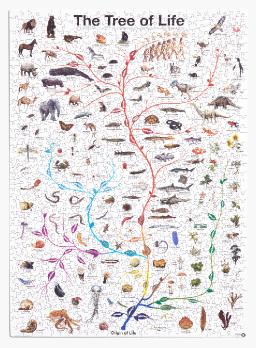Twitter Nerd-Fight Reveals a Long, Bizarre Scientific Feud


The editorial in the February issue of the scientific journal Cladistics didn’t exactly drop with a bang. Cladistics has around 600 subscribers—almost half of which are libraries or other institutions—and it’s aimed at “scientists working in the research fields of evolution, systematics and integrative biology,” as the journal’s summary says. It’s a journal about building evolutionary trees of life, basically. Important, but harmless, right?
This particular editorial was, on its surface, in keeping with that approach. Heavy on jargon, only two references—one of them from 50 years ago, the other from 30—it was close to a cri de coeur. “Phylogenetic data sets submitted to this journal should be analysed using parsimony,” the editorial reads.
In short, the editors of Cladistics were insisting that anyone trying to build those trees of life had to use a method called parsimony—that, in fact, anyone who didn’t use parsimony wasn’t doing real science.
Science Twitter caught fire pretty fast after that. Researchers in the field got mad; the society that publishes the journal got mad back, publicly. Things, as they say, escalated. Now, if this were just another slap-fight in the letters page of just another mid-tier journal, that probably wouldn’t matter. But the battle over parsimony is actually the story of a bizarre war between biologists and a scientific society with a reputation for bullying. And at stake is the way scientists make sense of the natural world.


Growing the Trees of Life
You’ve seen evolutionary maps before. Even Charles Darwin used the metaphor, envisioning an earlier species that gave rise to new ones, each new species splitting off as a branch of an ever-growing tree. Scientists are still growing that tree. How to do it, though, and where to put everything, is always in play. This field of research is called phylogenetics: the study of the evolutionary relationships between organisms.
One approach for growing these trees is called parsimony. The basic idea is that the tree with the fewest number of evolutionary changes is the most likely to be true. It’s like Occam’s razor, if Occam had been an arborist. So, for example, if you built a tree that grouped gorillas with, like, tigers instead of humans, that would mean evolution had produced the opposable thumb twice (for gorillas over there and you and me over here). But group gorillas on a branch with humans and we share some common ancestor closer to the trunk who evolved an opposable thumb just once. Parsimony says, well, that’s your tree.